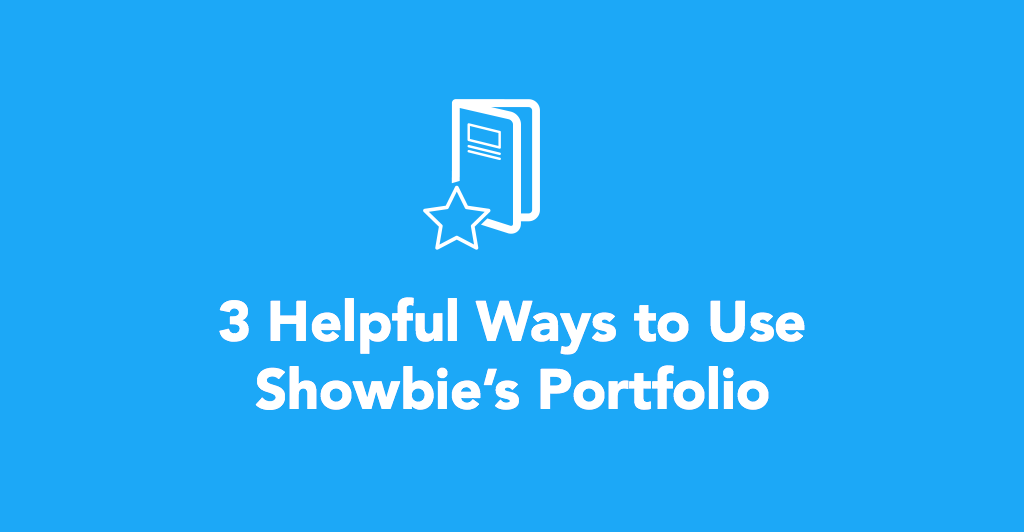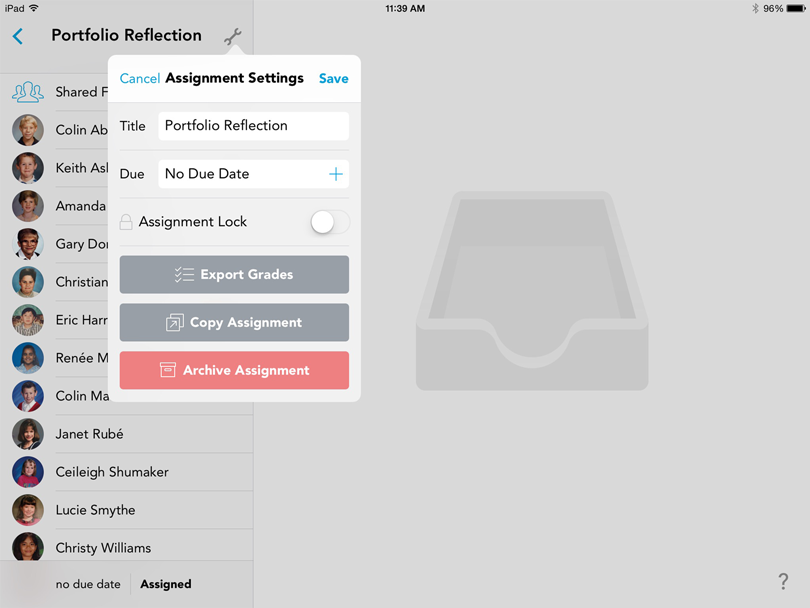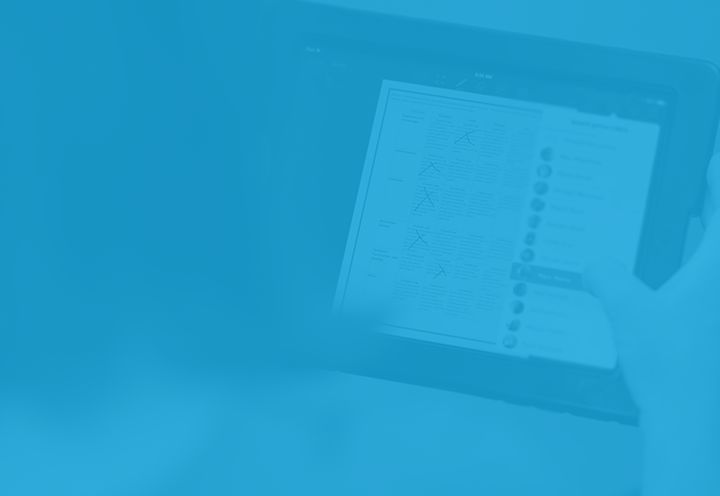
Showbie’s portfolio feature was created with the intention of making it easy and intuitive to add and collect work so it could be used as a tool for growth and assessment.
To help you get started using portfolio in your classroom, here are three quick tips to get you and your students thinking about self reflection, including some great resources detailing what other educators have found success with.
1. Reflect on the Journey of an Assignment
Get students in the habit of reflecting on their work by asking them to track and comment on each step of an assignment as they add it to their portfolio. This works especially well for assignments that require multiple steps or drafts. Create goals for each step of the assignment, and then ask students to upload their progress to the portfolio accompanied by comments prompted by you.
Beth Holland’s article Digital Portfolios: The Art of Reflection is a great resource for learning how to get started utilizing portfolios in the classroom. In it, she uses an example of how a student reflected on their learning experience as they worked on a science fair presentation, and how that impacted their end result.
This Science Fair Presentation is a perfect example of how his students chronicle both their learning and their end results. The student responds to a series of prompts from Paul and incorporates the videos captured during the experience. In the end, not only did the student capture the final performance of the science fair, but also the lessons learned along the way.
Holland also provides advice for how to get started asking essential questions to help students learn what they should be reflecting on. Doing this not only helps students improve their final result, it gives them a deeper insight into how they achieved it.
2. Create a Reflection Journal
With the addition of Showbie 2.3’s no due date assignment feature, teachers can now create ongoing journal assignments. This means students can reflect on their portfolio items in one convenient place when prompted by your instruction. As an ongoing assignment, you can get your students to comment on their portfolio entries as they add them, or to comment on their progress once multiple assignments have been added over time.

Creating a no due date assignment reflection journal not only helps students learn how to think about the work stored in their portfolio, but it allows educators to track what students know and what they need to improve their education.
3. Enable Student-Curated Portfolios
Encouraging students to get into the habit of adding work to their own portfolio is a powerful way to encourage reflection, as it prompts students to think about what work is portfolio worthy.
In Classroom Q&A with Larry Ferlazzo, he asked educators how they help students develop portfolios. In the responses, blogger and educator Rusul Alrubail speaks to the benefit of giving students ownership over their portfolio:
Consider giving students a choice in topics to share and write about in their digital portfolios. This will give a sense of ownership to students on the process and will increase levels of engagement and motivation. Giving students choice will also inadvertently give authentic pedagogical feedback on the students’ learning and their needs in the classroom.
Ferlazzo’s post includes more useful testimonials from educators who are successfully using portfolios, including advice on what to do. Allowing students to curate their portfolio helps educators gain a deeper insight into their needs and requirements in your classroom.
How are You Using Showbie’s Portfolio?
Whether you’re using portfolio to reflect on one time assignments or to develop a more formative assessment of student progress over time, it’s a powerful tool to get students to start critical thinking and becoming more self aware.
How are you using Showbie’s portfolio? Leave a comment or contact me at katie@showbie.com — I’d love to hear (and write) about it!


